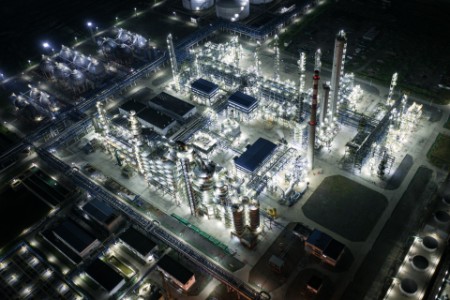The upstream value chain has largely been characterized by high capital intensity and complex field activities. Improved efficiency in exploration, return on assets and employee safety are key priority areas for oil and gas players. Using customized ML algorithms and artificial intelligence (AI) led models, oil and gas companies can screen and identify optimum acreage opportunities, enhance subsurface modelling and drilling performance. What is fundamental to intelligent automation’s success is its ability to integrate disparate technologies, break down information silos and analyze a vast quantity of data at rapid pace. An intelligent automation solution can integrate traditional well modelling applications with cutting edge analytics data engine to generate insights which can then assist in decision making for field engineers. A connected eco-system enables seamless information flow through AI led conversation BOTs and search optimization engines for field staff.
Akin to upstream value chain, the midstream and downstream activities are also witnessing an increased adoption of intelligent automation technologies. Inventory management, contract management, plant equipment downtime management, logistics monitoring and coordination are some of the use cases where intelligent automation can make positive impact. Conversation automations enabled by technologies like NLP and NLG add significant value in marketing and sales processes in oil and gas organizations. These connected technologies across conversation, vision and intelligence have now become mission critical for most organizations during current COVID-19 crisis, as the need for remote operations increased substantially.
Oil and gas players have for long strived to minimize the adverse human, environmental and social impact that industry emissions create. There have been several accidents in this regard that have resulted in huge financial and reputational losses for many energy players. Intelligent automation can enable continuous monitoring of hazardous emissions and leverage predictive analytics to get data-driven forecasts of emissions. It can seamlessly forewarn EHS (environment, health and safety) personnel in case emission forecasts are expected to breach predetermined thresholds. This transforms the EHS function from being reactive to being proactive in its approach towards managing hazardous emissions.
The impact of intelligent automation on the workforce is a topic of wide interest for oil and gas leaders. Traditionally believed to be a cost reduction driver only, it is often perceived negatively due to the digital anxiety. However, what differentiates intelligent automation from other mainstream technologies is its proximity with business functions. With advent and prevalence of low code AI and citizen development practices, intelligent automation is set to become a truly transformational tool in the hands of the oil and gas workforce. This paves the way for a paradigm shift in the knowledge and skills of the larger organizational workforce. As a result, it is a win-win proposition for oil and gas leaders to reap immediate cost and efficiency benefits, while upskilling the larger workforce for long-term future readiness.



